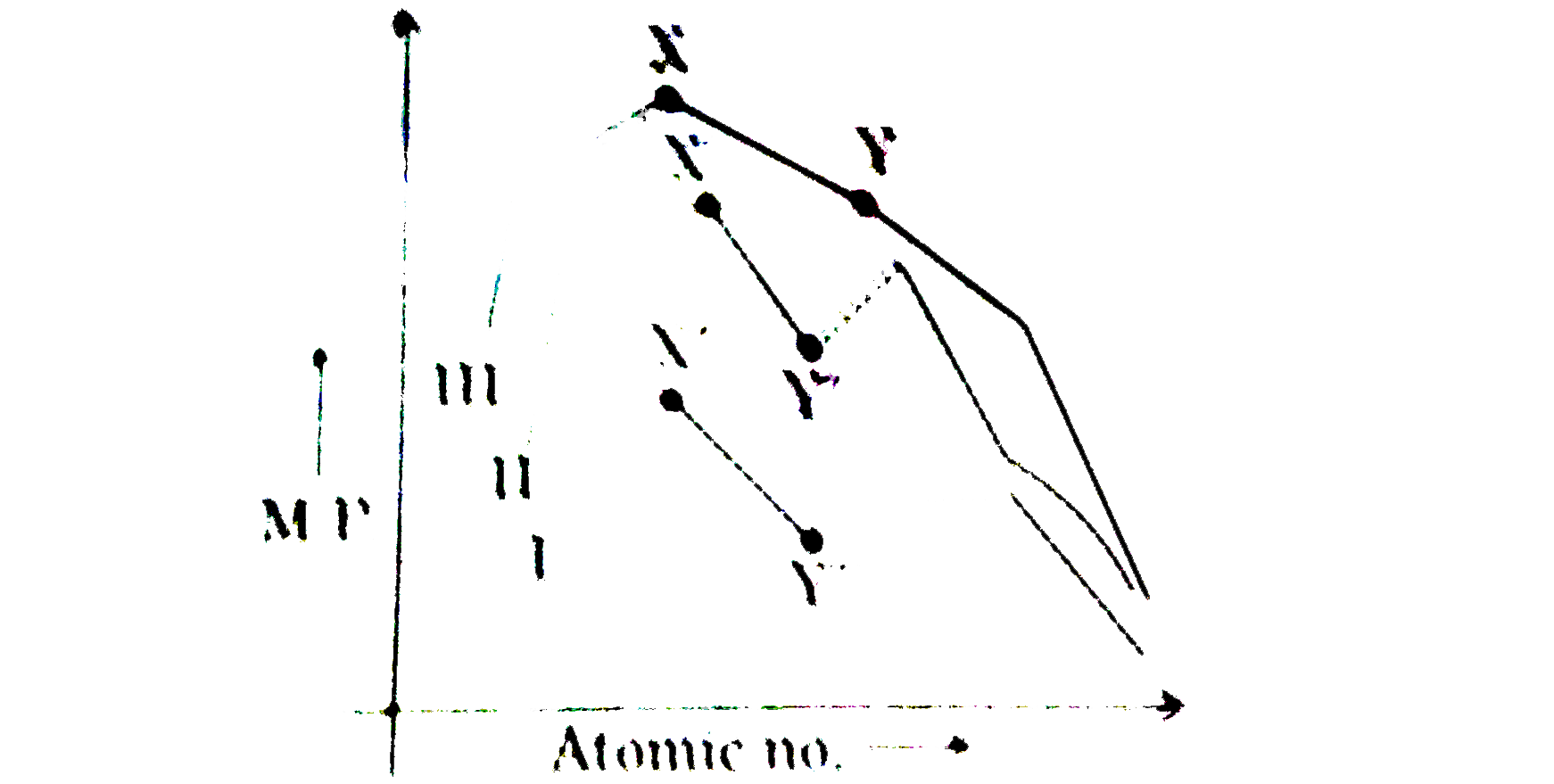Consider the following statements.
I The d-orbitals of the penultimate energy level in their atoms receive electrons giving rise to the three rows of the transition metals, i.e., 3d,4d and 5D.
The fourth row of 6d is still incomplete.
The correct statement (s) is /are (choose) the appropriate option)
Only I
Only II
Both I and II
None of these
The correct Answer is:C
Similar Questions
Read the given passage and answer the questions number 1 to 5 that follow :
The d-block of the periodic table contains the elements of the groups 3 - 12 and are known as transition elements. In general, the electronic configuration of these elements is (n - 1) d1−10ns1−2. The d-orbitals of the penultimate energy level in their atoms receive electrons giving rise to the three rows of the transition metals i.e., 3d, 4d and 5d series. However, Zn Cd and Hg are not regarded as transition elements. Transition elements exhibit certain characteristic properties like variable oxidation states, complex formation, formation of coloured ions and alloys, catalytic activity, etc. Transition metals are hard (except Zn, Cd and Hg) and have a high melting point.
Which transition metal of 3d series does not show variable oxidation states ?
View SolutionRead the given passage and answer the questions number 1 to 5 that follow :
The d-block of the periodic table contains the elements of the groups 3 - 12 and are known as transition elements. In general, the electronic configuration of these elements is (n - 1) d1−10ns1−2. The d-orbitals of the penultimate energy level in their atoms receive electrons giving rise to the three rows of the transition metals i.e., 3d, 4d and 5d series. However, Zn Cd and Hg are not regarded as transition elements. Transition elements exhibit certain characteristic properties like variable oxidation states, complex formation, formation of coloured ions and alloys, catalytic activity, etc. Transition metals are hard (except Zn, Cd and Hg) and have a high melting point.
Why are melting points of transition metals high ?
View Solution
Knowledge Check
Consider the following statements.
I The three series of the transition metals are 3d series (Sc to Zn),4d series (Y to Cd) and 5d series.
II. The two series of the inner transition metals (4f and 5f) are known as actinoids and lanthanoids respectively.
The above mentioned correct statement (s) is /areAOnly IIBOnly ICBoth I and IIDNone of these
Refer to the graph for trends in M.P. of transition elements of 3d,4d and 5d series.
Q. Choose the correct statement(s).AIII refers to 3rd transition series of periodic table.BX corresponds to tungstenCY" corresponds to manganese.Dall of the above.Which of the following statement is correct for 3d-transition element
AAll the metals except Sc forms 'MO' oxideBAll the metals except Zn forms 'MO' oxideCAll the metals except Zn and Sc form 'MO' oxideDAll the metals except Mn forms 'MO' oxide
Read the given passage and answer the questions number 1 to 5 that follow :
The d-block of the periodic table contains the elements of the groups 3 - 12 and are known as transition elements. In general, the electronic configuration of these elements is (n - 1) d1−10ns1−2. The d-orbitals of the penultimate energy level in their atoms receive electrons giving rise to the three rows of the transition metals i.e., 3d, 4d and 5d series. However, Zn Cd and Hg are not regarded as transition elements. Transition elements exhibit certain characteristic properties like variable oxidation states, complex formation, formation of coloured ions and alloys, catalytic activity, etc. Transition metals are hard (except Zn, Cd and Hg) and have a high melting point.
Why do transition metals and their compounds show catalytic activity ?
View SolutionRead the given passage and answer the questions number 1 to 5 that follow :
The d-block of the periodic table contains the elements of the groups 3 - 12 and are known as transition elements. In general, the electronic configuration of these elements is (n - 1) d1−10ns1−2. The d-orbitals of the penultimate energy level in their atoms receive electrons giving rise to the three rows of the transition metals i.e., 3d, 4d and 5d series. However, Zn Cd and Hg are not regarded as transition elements. Transition elements exhibit certain characteristic properties like variable oxidation states, complex formation, formation of coloured ions and alloys, catalytic activity, etc. Transition metals are hard (except Zn, Cd and Hg) and have a high melting point.
Why are Zn, Cd and Hg non-transition elements ?
View SolutionRead the given passage and answer the questions number 1 to 5 that follow :
The d-block of the periodic table contains the elements of the groups 3 - 12 and are known as transition elements. In general, the electronic configuration of these elements is (n - 1) d1−10ns1−2. The d-orbitals of the penultimate energy level in their atoms receive electrons giving rise to the three rows of the transition metals i.e., 3d, 4d and 5d series. However, Zn Cd and Hg are not regarded as transition elements. Transition elements exhibit certain characteristic properties like variable oxidation states, complex formation, formation of coloured ions and alloys, catalytic activity, etc. Transition metals are hard (except Zn, Cd and Hg) and have a high melting point.
Why is Cu2+ ion coloured while Zn2+ ion is colourless in aqueous solution ?
View SolutionWhich of the following statement is correct for 3d-transition element
View SolutionConsider the following statements.
I. Ionisation enthalpy along each series of the transition elements from left to right.
II. Nuclear charge increases which results in the filling of inner d-orbitals
The incorrect statement (s) is /are (choose the appropriate option )
View Solution
